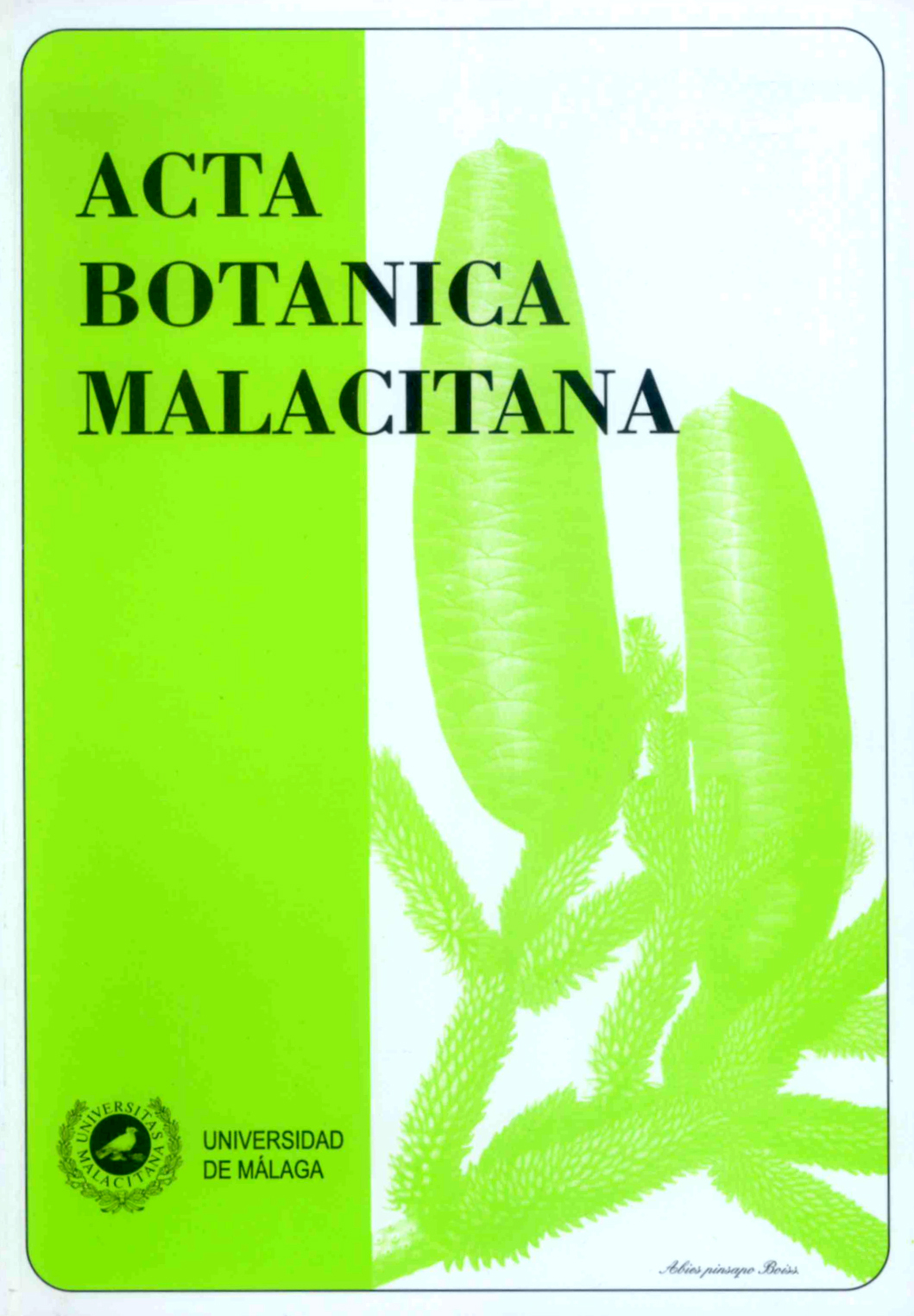La flora vascolare della Peninsola del Sinis (Sardegna Occidentale)
DOI:
https://doi.org/10.24310/abm.v33i0.6986Abstract
RIASSUNTO. La flora vascolare della Penisola del Sinis (Sardegna Occidentale). Viene presentato
lo studio della flora vascolare della Penisola del Sinis; in totale sono state rinvenute 760 unità
tassonomiche e in particolare 615 specie, 134 sottospecie, 10 varietà e 1 ibrido, riferibili a 365 generi
e 87 famiglie. Le Eudicots sono risultate il gruppo sistematico dominante. Le famiglie più rappresentate
sono: Poaceae (99 unità tassonomiche), Fabaceae e Asteraceae (85), Caryophyllaceae (33), Apiaceae
(27) e Orchidaceae (24). I generi con maggior numero di taxa sono: Trifolium (19), Silene (14),
Limonium e Medicago (13), Ophrys (12), Euphorbia e Vicia (10), Plantago (9), Allium (8) e infine
Lotus, Ranunculus e Vulpia (7). Il contingente delle endemiche (54 unità tassonomiche) è risultato
pari al 8,97% della componente mediterranea e mostra una dominanza degli elementi sardo-corsi
(33,33%) e secondariamente sardi (24,10%), i quali unitamente raggiungono il 57,43% del totale. La
flora endemica è costituita da 31 specie, 17 sottospecie e 6 varietà, inquadrati in 38 generi e 22
famiglie. Le famiglie più rappresentate sono risultate le Plumbaginaceae (10), Asteraceae e Lamiaceae
(5), Fabaceae (4), Alliaceae, Euphorbiaceae e Ranunculaceae (3); il genere più ricco è risultato
Limonium (10), seguito da Allium, Delphinium, Euphorbia, Scrophularia, Silene e Teucrium (2). E’stato
elaborato un elenco dei taxa inseriti nelle liste rosse regionali d’Italia, al quale sono state aggiunte
tutte le endemiche esclusive e le specie di importanza conservazionistica a livello regionale, per le
quali vengono proposte le nuove categorie di protezione secondo i criteri della IUCN. Da tale analisi
è emerso che sono presenti 12 unità tassonomiche gravemente minacciate, gruppo che include gran
parte delle endemiche esclusive del territorio. Sulla base dei dati morfologici, geologici e bioclimatici
relativi ai territori studiati, unitamente alle analisi di tipo floristico ed in particolare della componente
endemica e d’interesse fitogeografico, viene proposto un inquadramento biogeografico a livello di
sottosettore.
Parole chiave. Flora, diversità vegetale, endemiche, conservazione, biogeografia, Sardegna
ABSTRACT. The vascular flora of Sinis Peninsula (W Sardinia).The vascular flora of Sinis Peninsula
(W Sardinia) has been studied; 760 taxa, 615 of which were species, 134 subspecies, 10 varieties and
1 hybrid were found. They were included in 365 genera and 87 families. The Eudicots were dominant
over the other systematic groups. The most represented families were: Poaceae (99 taxonomic units),
Fabaceae and Asteraceae (85), Caryophyllaceae (33), Apiaceae (27) and Orchidaceae (24). The most
represented genera were: Trifolium (19), Silene (14), Limonium and Medicago (13), Ophrys (12),
Euphorbia and Vicia (10), Plantago (9), Allium (8) and, finally, Lotus, Ranunculus and Vulpia (7).
The contingent of endemics (54 taxonomic units) was 8,97% of the Mediterranean component showing
the dominance of Sardinian-Corsican (33,33%) and in the second place Sardinian elements (24,10%),
that together to reach 57,43% of the total. This flora consisted of 31 species, 17 subspecies and 6
varieties; 38 genera and 22 families were recognized. The most represented families were:
Plumbaginaceae (10), Asteraceae and Lamiaceae (5), Fabaceae (4), Alliaceae, Euphorbiaceae and
Ranunculaceae (3). The most represented genera were: Limonium (10) and Allium, Delphinium,
Euphorbia, Scrophularia, Silene, Teucrium (2). Based on the taxa present in the regional Italian Red
List, the species exclusive of Sardinia and important for the conservation has been included. For
these species we proposed the news categories of preservation following the IUCN criteria. Our
analysis, confirmed the presence of 12 taxa critically endangered as well as this group included the
majority of exclusive endemism of the territory. According to the geomorphological, geological and
bioclimatic data of the territories studied within the floristic analysis and in particular the endemic
and phytogeographical component, we proposed the creation of new biogeographic subsector named
Sinisico.
Key words. Flora, plants diversity, endemics, conservation, biogeography, Sardinia
Downloads
Metrics
Downloads
Published
How to Cite
Issue
Section
License
All information related to the licensing of published works in Acta Botanica Malacitana and copyright can be found in our Editorial Policy.







1.png)
